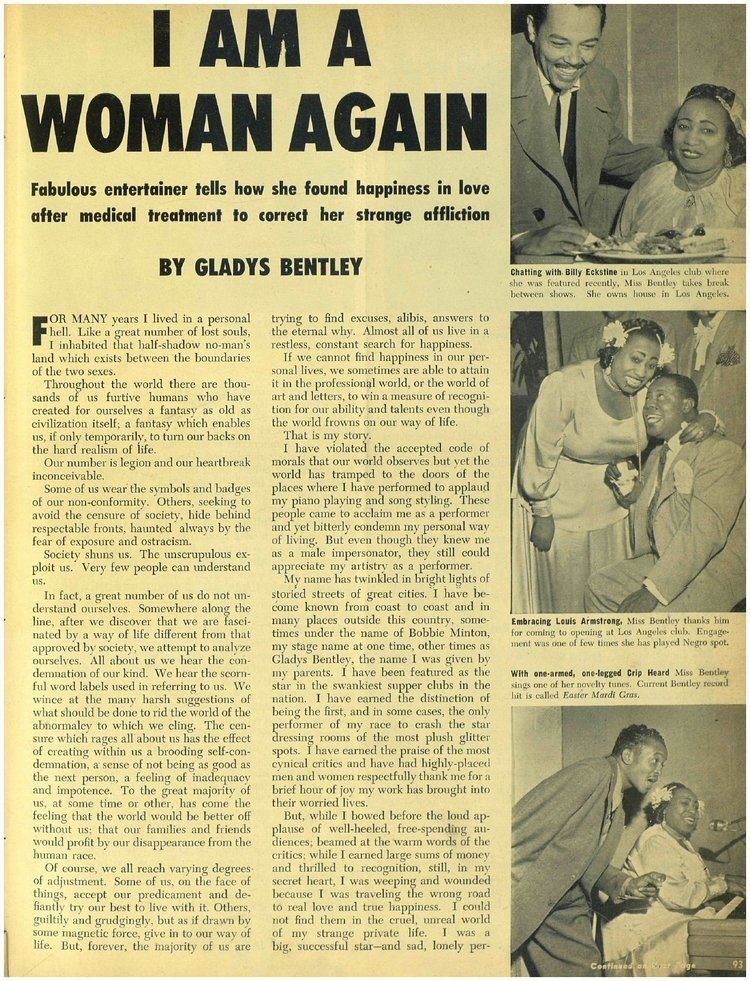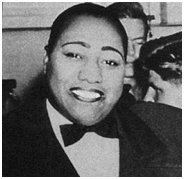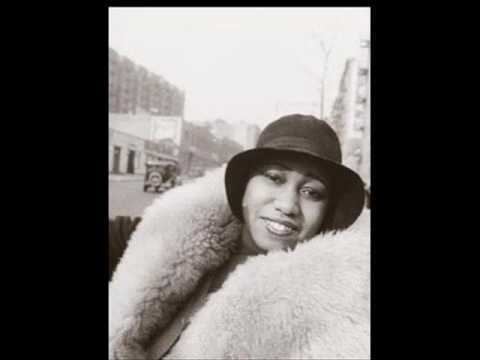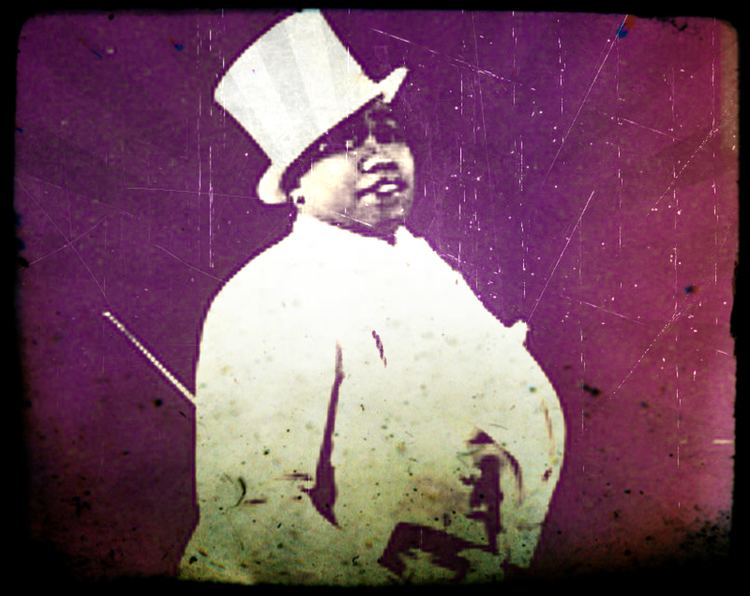Occupation(s) Singer Genres Blues Role Singer | Name Gladys Bentley Years active 1920s–1930s Albums Ground Hog Blues | |
 | ||
Similar People Wardell Gray, Dexter Gordon, Chuck Thompson, Red Callender, Gerald Wiggins | ||
Gladys bentley on you bet your life
Gladys Alberta Bentley (August 12, 1907 – January 18, 1960) was an American blues singer, pianist and entertainer during the Harlem Renaissance.
Contents
- Gladys bentley on you bet your life
- Gladys Bentley Worried Blues
- Early life
- Career
- Personal life and death
- Legacy
- Venues
- Discography
- References

Her career skyrocketed when she appeared at Harry Hansberry's Clam House in New York in the 1920s, as a black, lesbian, cross-dressing performer. She headlined in the early 1930s at Harlem's Ubangi Club, where she was backed up by a chorus line of drag queens. She dressed in men's clothes (including a signature tuxedo and top hat), played piano, and sang her own raunchy lyrics to popular tunes of the day in a deep, growling voice while flirting with women in the audience.

On the decline of the Harlem speakeasies with the repeal of Prohibition, she relocated to southern California, where she was billed as "America's Greatest Sepia Piano Player" and the "Brown Bomber of Sophisticated Songs". She was frequently harassed for wearing men's clothing. She tried to continue her musical career but did not achieve as much success as she had had in the past. Bentley was openly lesbian early in her career, but during the McCarthy Era she started wearing dresses and married, claiming to have been "cured" by taking female hormones.

Gladys Bentley, "Worried Blues"
Early life

Bentley was born in Philadelphia, the daughter of George L. Bentley, an American, and his wife, Mary Mote, a Trinidadian. In Bentley’s Ebony article, she wrote about trouble in the home as she was growing up and the relationship between her and her mother. She was the eldest of four children in a poor family and always felt unwanted or rejected, because her mother desperately wanted her to have been born a boy: "When they told my mother she had given birth to a girl, she refused to touch me. She wouldn’t even nurse me and my grandmother had to raise me for 6 months on a bottle before they could persuade my mother to take care of her own baby." She believed that growing up feeling rejected shaped her behavior; she never wanted a man to touch her, hated her brothers, wore boys’ clothes, and had a crush on one of her female teachers in elementary school. Sociologists and psychiatrists at the time called her case "extreme social maladjustment" due to her home dynamic.
Career

She moved to New York City from Philadelphia at the age of 16. She impressed a Broadway agent right away, recorded eight tracks, and received a $400 check. Later, she heard that Harry Hansberry's Clam House on 133rd Street, one of the city's most notorious gay speakeasies, needed a male pianist. This is when she began performing in men’s attire ("white full dress shirts, stiff collars, small bow ties, oxfords, short Eton jackets, and hair cut straight back"), and here she perfected her act and became popular and successful.
Her salary started at $35 per week plus tips and went to $125 per week, and the club was soon renamed Barbara’s Exclusive Club, after her stage name at the time, Barbara "Bobbie" Minton. She then began performing at the Ubangi Club on Park Avenue, she got an accompanist on piano and was successful enough to own a "$300/month apartment in Park Ave. with servants and a nice car" (although some have said that she was living in the penthouse of one of her lesbian lovers). She toured the country, some destinations being Cleveland, Pittsburgh, Chicago, and Hollywood, where she was well liked by Cesar Romero, Hugh Herbert, Cary Grant, Barbara Stanwyck, and other celebrities.
Bentley had great talent as a piano player, singer and entertainer. Her performances were “comical, sweet and risqué” for the era and the audience. She often sang about “sissies” and “bulldaggers” and, through innuendo or more literally, about her female lovers, and she flirted with women in the audience. She mostly played the blues and parodies of popular songs of the time: "mocking ‘high’ class imagery with ‘low’ class humor, she applied aspects of the sexually charged ‘black’ blues to demure, romantic ‘white’ ballads, creating a culture clash between these two music forms".
She sang loud, and her vocal style was deep and booming, sometimes using a growling effect and imitations of a horn. She recorded for the OKeh, Victor, Excelsior, and Flame labels. Her vocal range was wide, as can be heard in her recordings. She mostly sang in a deep, low range, but also reached high notes. Bentley’s performances appealed to black, white, gay, and straight audiences alike, and many celebrities attended her shows. Langston Hughes recorded his reaction to the beginning of Bentley’s career success:
For two or three amazing years, Miss Bentley sat, and played piano all night long … with scarcely a break between the notes, sliding from one song to another, with a powerful and continuous underbeat of jungle rhythm. Miss Bentley was an amazing exhibition of musical energy – a large, dark, masculine lady, whose feet pounded the floor while her fingers pounded the keyboard – a perfect piece of African sculpture, animated by her own rhythm.
On the decline of the Harlem speakeasies with the repeal of Prohibition, she relocated to southern California, where she was billed as "America's Greatest Sepia Piano Player" and the "Brown Bomber of Sophisticated Songs". She tried to continue her musical career but did not achieve as much success as she had had in the past. She was frequently harassed for wearing men's clothing. She claimed that she had married a white woman in Atlantic City. Bentley was openly lesbian early in her career, but during the McCarthy Era, she started wearing dresses and married (within five months of meeting) Charles Roberts, age 28, a cook, in a civil ceremony in Santa Barbara, California, in 1952. Roberts later denied that they had ever married.
Bentley also studied to be a minister, claiming to have been "cured" by taking female hormones. In an effort to describe her supposed "cure" for homosexuality she wrote an essay, "I Am a Woman Again", for Ebony magazine in which she stated she had undergone an operation, which "helped change her life again".
Personal life and death
Bentley said that her first marriage was to a white woman in New York, whose identity remains unknown. When she relocated to Los Angeles, she married J. T. Gipson, who died in 1952, the same year in which she married Charles Roberts, a cook in Los Angeles; they were married in Santa Barbara, California, went on a honeymoon in Mexico, and had a five-month-long courtship before their divorce. Roberts denied ever marrying her.
Bentley died of pneumonia in Los Angeles in 1960, aged 52.
Legacy
Aside from her musical talent and success, Bentley is a significant and inspiring figure for the LGBT community and for African Americans, and she was a prominent figure in the Harlem Renaissance. She was revolutionary in her masculinity: "Differing from the traditional male impersonator, or drag king, in the popular theater, Gladys Bentley did not try to ‘pass’ as a man, nor did she playfully try to deceive her audience into believing she was biologically male. Instead, she exerted a ‘black female masculinity’ that troubled the distinctions between black and white and masculine and feminine".
Fictional characters based on Bentley appeared in Carl Van Vechten's Parties, Clement Woods's Deep River, and Blair Niles's Strange Brother.
Venues
Bentley appeared at:
Discography
Okeh Records
Recorded August 8 and 31, 1928
Recorded November 15, 1928, and March 26, 1929
Victor
Excelsior Records
As Gladys Bentley Quintette, 1945
Swingtime Records
Flame Records
